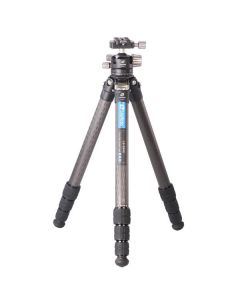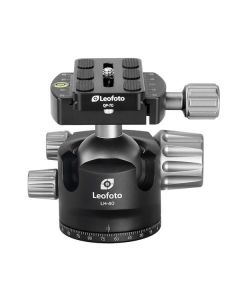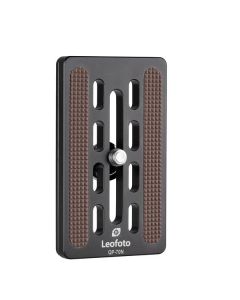A solid foundation for astrophotography starts with a good tripod.

It all starts with a good tripod!
There is one subject that can be photographed anywhere in the world: our night sky. And somehow, looking at the stars, the moon and the planets has at least a virtual travelling character. It also makes me dream about my greatest wish, a flight into space. It is not for nothing that the working title of my next project is 'Interstellar'.

Written by Adrian Rohnfelder
Adrian Rohnfelder is an internationally acclaimed photographer. He is also an author and teacher. He travels to the most heavenly and hellish places on earth to take the most beautiful photos. Visit his website https://rohnfelder.de/
Table of Contents:
For astrophotography, it is absolutely necessary to work with a stable tripod. For full-frame images of the moon, for example, you need a strong telephoto lens. Even with my light MFT equipment, my camera including lens weighs two kilograms. You need a tripod that is stable at this weight and there should really be no vibrations. In the telephoto range, even the slightest vibration causes visible blurring of the image. A heavy, stable tripod is perhaps the most obvious option to prevent vibrations.
On the other hand, I like to travel with light luggage, so I am looking for the ideal combination. The Leofoto LS-324C tripod with the LH-40 ball head, based on the Ranger series, seems to have proven itself. So I am taking it with me on my trip to the stars to try this tripod out for myself.

The weight of this tripod with ball head is less than two kilos and it has a pack size of 570mm. These specifications are just about acceptable to me. I am taking the tripod to a nearby meadow for the test. My future trips will mainly consist of longer stages on foot with heavy luggage. The light weight of the LS-324C tripod is made possible by the use of carbon fibre. The 10 layers of carbon ensure stability and the carbon creates little vibration. In addition, the remaining unwanted vibrations are absorbed by rubber feet. Depending on the terrain, you can easily replace the feet with the supplied stainless steel spikes.
What I particularly like about the Leofoto tripod is its modular construction. For example, the included central column is not built into the tripod, so you can also remove the column if you want. In addition, Leofoto has many other useful and optional accessories for the tripod. This way, I can decide how much equipment I want or can take with me, depending on the tour and the goal.



The four segments of the tripod legs can be smoothly pulled apart and pushed back together again. The rubber rotary handles for securing a segment have a good grip and feel comfortable even when it is cold outside. Thanks to a practical hinge, the tripod legs have three different tilt angles. At the largest tilt angle, the legs can be locked in place, providing completely flat support on the ground. This gives extra stability in strong winds.
Leofoto tripods are of very good quality and have a long life.
For this reason, every Leofoto tripod comes with a 10-year warranty.
You can register your Leofoto product here!

What I like most about the tripod is the sturdy LH-40 ball head. The lower part of the head allows 360 degrees of horizontal panning. The numbering of the degrees on the ball head helps me when taking a panoramic photo. The built-in spirit level is also nice, because it allows you to quickly see whether your camera is positioned straight and whether the horizon in the final (panorama) photo is straight.
The three dials to adjust the ball head have notches that are easy to grasp and turn. The largest dial is used to adjust the ball joint. This is done in a safe manner. There is nothing more annoying than a ball head that does not stay one hundred percent in the set position. I have set the ball head in several positions to the sky and that was even possible up to almost vertical with the two notches that allow a swivel in the vertical direction. I have not encountered any problems with that.
In addition, all Arca-Swiss compatible camera plates can be used on the quick release. For these plates, a multi-tool is also included to loosen or tighten the camera quick coupling. I find this very handy, finally gone are the times when I had to search for a coin somewhere deep in my backpack.


In astrophotography, it is essential to work with a stable tripod. By trying the Leofoto LS-324C tripod myself in practice, I can tell you that this tripod is both lightweight and stable. With this tripod and the LH-40 ball head, it was even possible to take pictures of Venus in strong winds. The Ranger LS-324C is easy to pack and carry. Now nothing is stopping me from continuing the journey to the sky.



-4.jpg)
